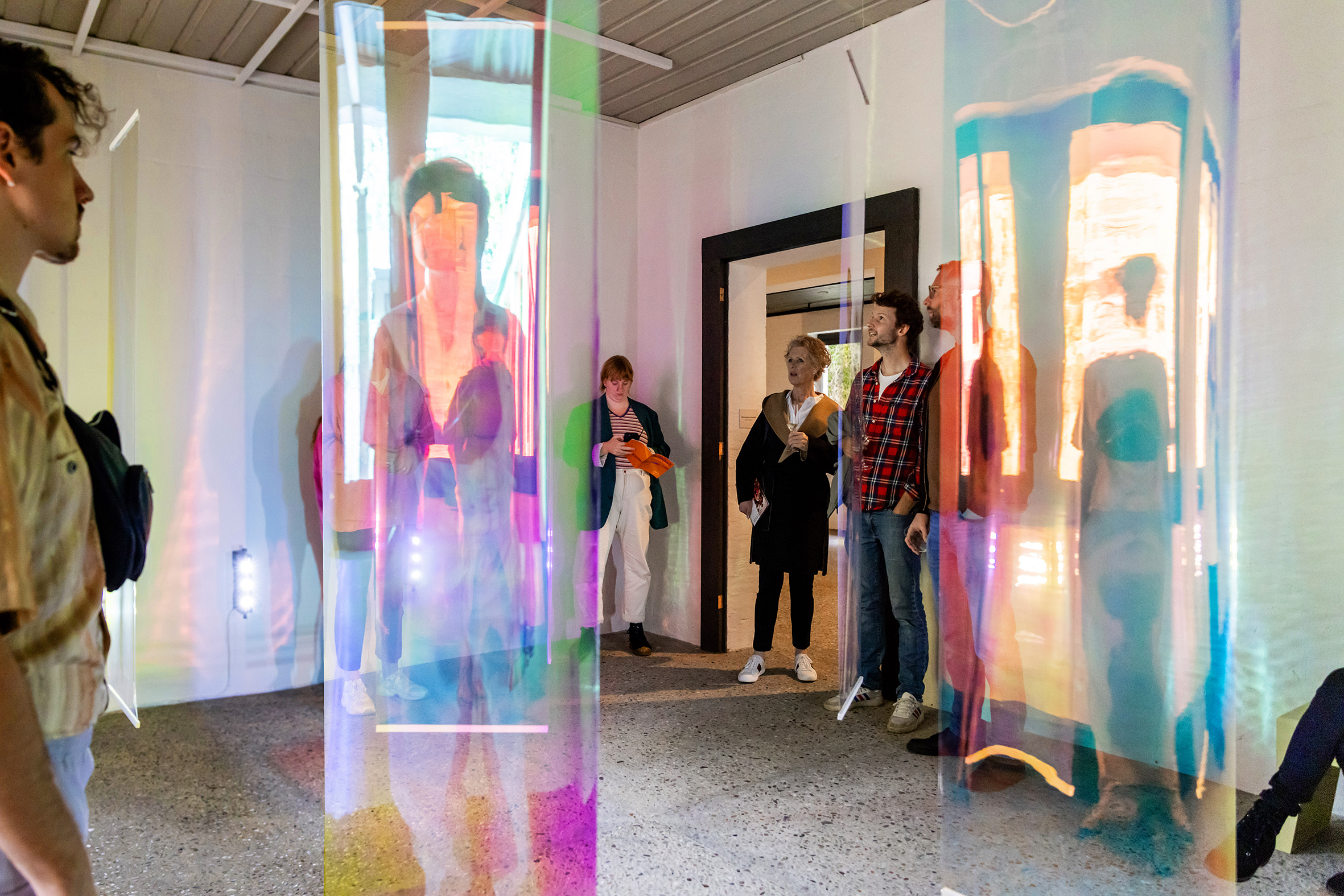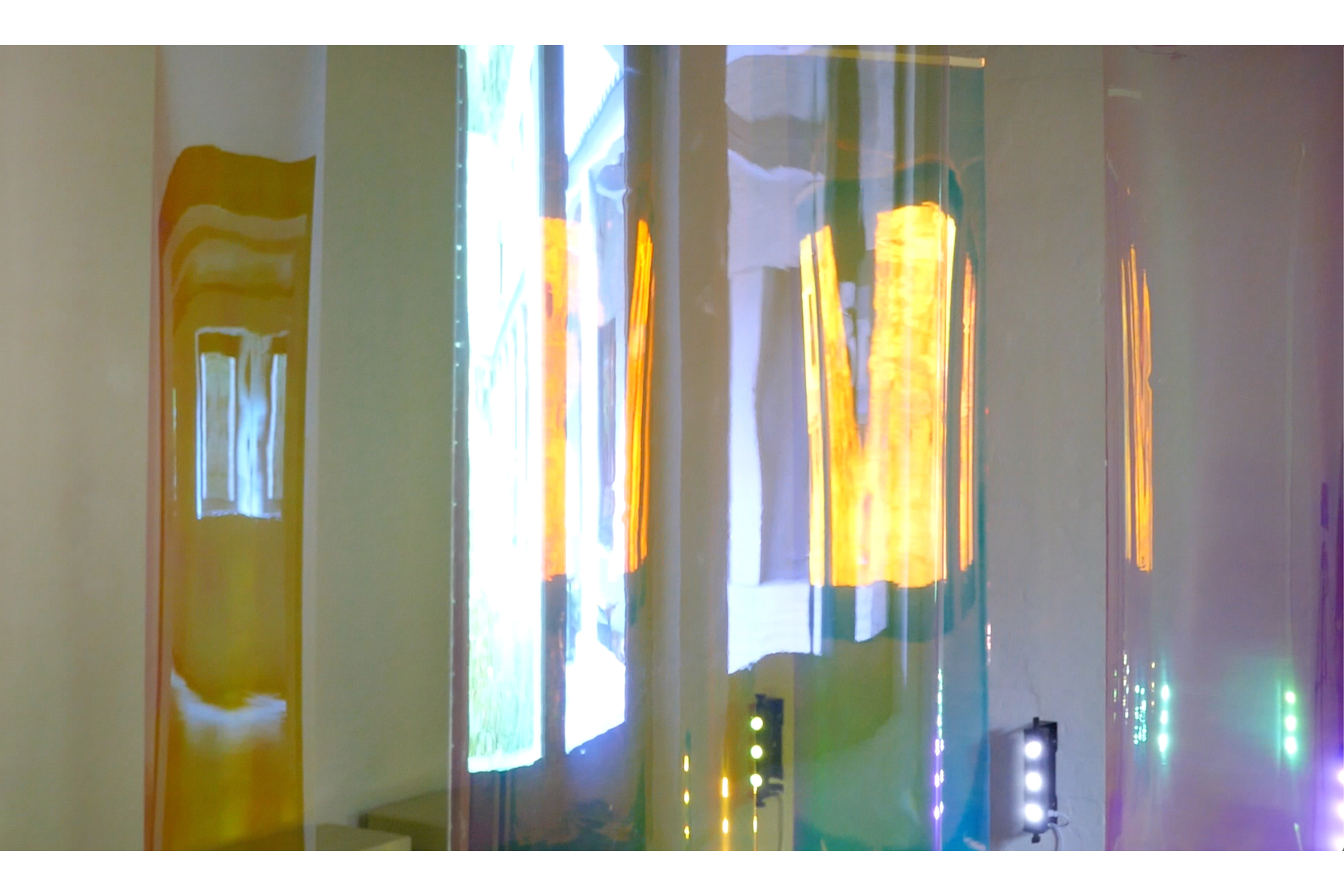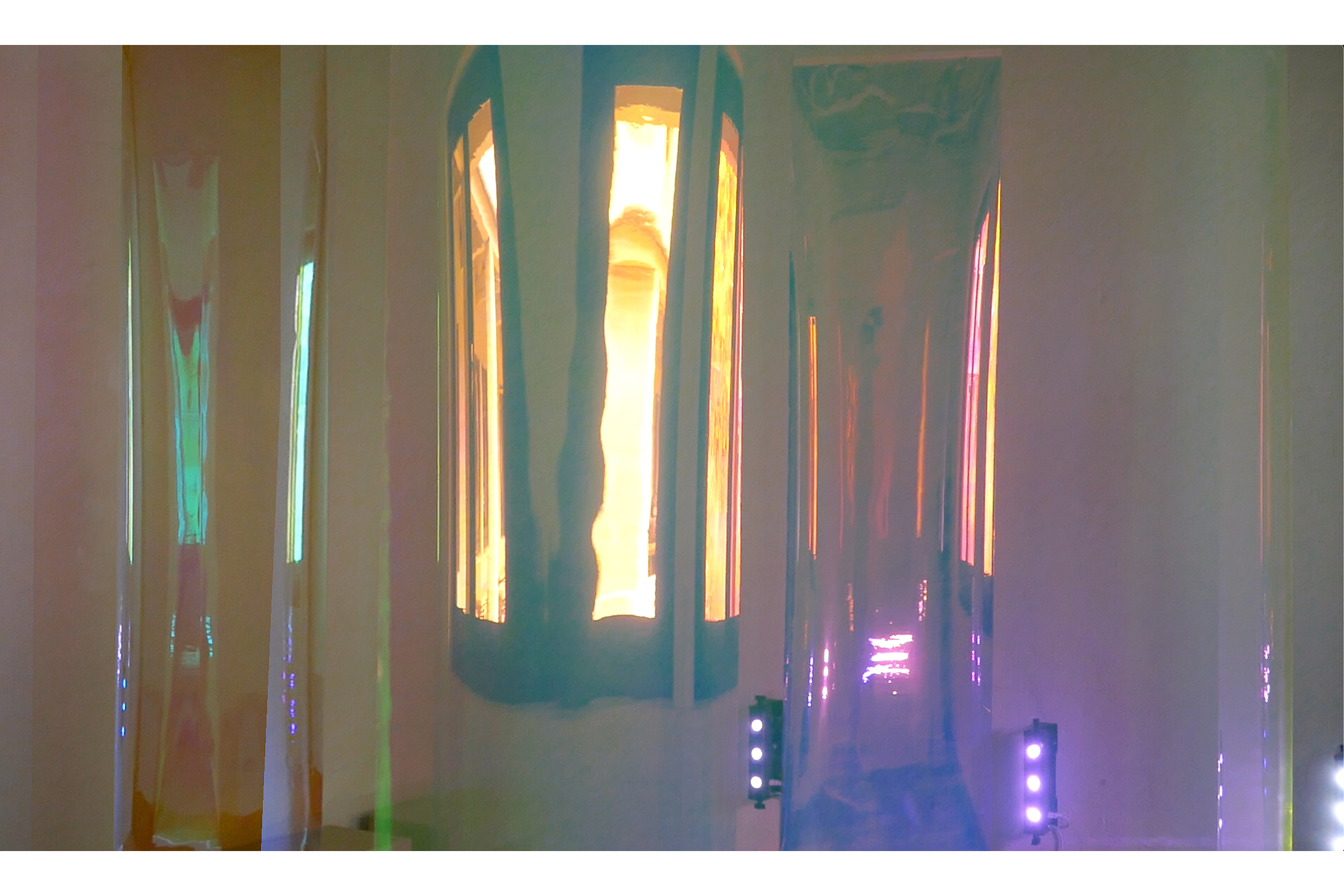How's your Spectrum?
How’s your spectrum is an installation of light and colour, mirroring and reflections. Six pieces of folie are hanging in a space, slowly rotating, each at their own speed, they interact with both daylight and artificial light. The continual movement brings about a space that is continually shifting, that is never the same. It creates an ongoing relationship between the light, the position of the folie and the position of the spectator. Continually transforming, the installation opens up an unknowable quality, that invites the curious attention of the spectator, to look for longer and engage with an experience of ever-changing colour and images. The ungraspable nature of the installation also calls attention to how we attempt to shape the experience of time, and the beauty in the serendipitous alignment of things in the moment.
The installation creates a physical metaphor; while things can appear one way on the surface, the experience of them is often very different. How’s your spectrum? was made in the context of the Prikkel research and exhibition at Buitenplaats Doornburgh which explores sensory processing. I was first interested in the idea of spectrum as a way to describe neurodiversity, and the idea that we are all somewhere on this spectrum. I was also interested in the idea that things are not always as they seem, and that to make assumptions about how another person processes sensory information is not always helpful. I was looking for a material that can transform depending on the light and perspective from which you look at it. And I wanted the spectator to be a part of the work; that they would move through it and physically experience how taking a different position completely changes what they see and their experience of the work.
The installation is deceptively simple. At first it appears to be six turning objects, but the more you look the more you see. The folie is arranged in the space to create different layers of colour, as the viewer sees through multiple moving layers. At times the folie can be very present, and then at a certain angle, it can also seem to disappear. This play between presence and absence, between the different images mirrored in the space creates a continually shifting collage. The installation invites you to take the time to look and see the different aspects on the installation open up, creating different images depending on the relationship between the folie, the light and movement and space.
The folie colours what is seen through it, and what is mirrored and reflected, as the placement of the folie and the mirroring of the architecture of the space creates a relationship with it. The installation is open to the space to the outside, and creates an interaction between the projection of colour from the daylight, and the coloured shadows and reflections created by the lamps. As you look you can see yourself, see yourself looking, and see through yourself, as you create ongoing compositions of these moving elements. In its constant reorganising of perception, the viewer physically experiences relationship between light, perception and space.
Schweigman& took the initiative for the long-term Prikkel project collaborating across domains and from a coherent perspective with Buitenplaats Doornburgh, the HKU (Utrecht School of the Arts Lectoraat Creatieve Maakprocessen) and the UMCU (University Medical Center Utrecht) - wanting to raise awareness of the subject of stimulus processing. Creating more understanding for ourselves and for others. To be able to interact with each other based on respect, curiosity, tolerance and recognition.
PRIKKEL is a collaboration between Schweigman&, Buitenplaats Doornburgh, Hogeschool voor de Kunsten Utrecht en UMC Utrecht.
More about the PRIKKEL project
This project was made possible by: Cultuur Innovatiefonds, Cultuurfonds Stichtse Vecht, Fentener van Vlissingenfonds, KF Heinfonds, Pauwhof Fonds, Prins Bernhard Cultuurfonds.
Photos - Lize Kraan, vinny jones
Opening Buitenplaats Doornburg 5 October, 2023.



























